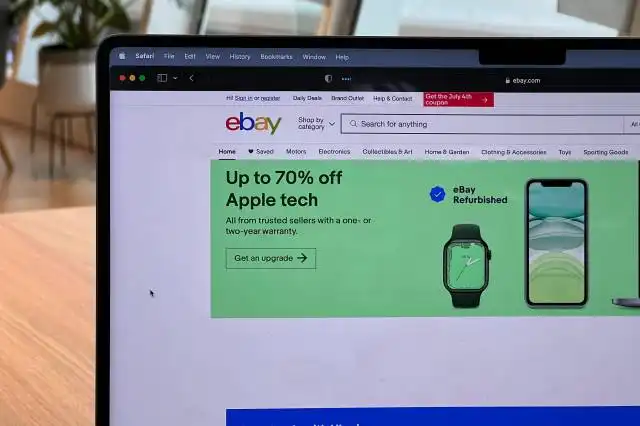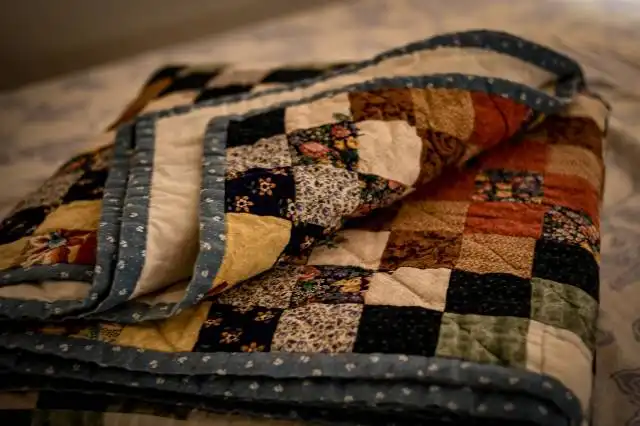Start a Sewing Business
Stitching The Future With Your Unique Fashion Business
| Updated


SEWING BUSINESS
Imagine a world where style meets personalized comfort - that's what you sign up for with a sewing business! This venture revolves around creating, designing, and tailoring clothes to fit clients' specific tastes and needs. A needle and thread could be your magic wand, turning fabric sheets into unique fashion pieces. Seamlessly stitch your entrepreneurial dream with this colorful venture in the fashion industry.
Jump to Business Plan
RELATED BUSINESS IDEAS
Browse ALL Arts & Crafts Business Ideas
Discover Your Perfect Domain
Unlock the door to your online success with our hand-picked selection of premium domain names. Whether you're starting a new venture or rebranding an existing one, the right domain can set the tone for your digital presence. Browse through our curated list, each with its unique potential to enhance your brand's visibility and credibility.
SEWING MINI BUSINESS PLAN
This a quick reality check to help you identify the strengths and weaknesses of your business concept before you dive in.
Expected Percent Margin:
- Gross Margin: 60-80%
- Net Profit Margin: 15-30%
Earnings Expectations:
- Daily Earnings: $100 - $300
- Weekly Earnings: $700 - $2100
- Monthly Earnings: $2800 - $8400
- Annual Earnings: $33,600 - $100,800
Actions to Hit Those Numbers:
Equipment and Materials:
- Initial Investment: About $5,000 for a reliable industrial sewing machine, fabrics, threads, etc.
- Sourcing: Find reliable providers of high-quality fabrics, threads, and supplies to ensure product durability.
Marketing and Client Acquisition:
- Online Presence: Building a compelling website and having active social media accounts are vital. Show your works, process, behind-the-scenes.
- Local Advertising: Participate in local craft shows and farmers markets for exposure.
Skills Enhancement and Design:
- Training: Constant learning and training to keep up with the latest styles and trends.
- Designing: Having a unique design that stands out is a must to capture a niche market.
Cost Control:
- Home-based Business: For a start, operating from home can significantly cut the overhead costs.
- Bulk purchases: Frequent bulk purchases can save on material costs.
Business Operations:
- Workload Management: Aim to complete at least 2-5 projects per day depending on the scale of the work.
- Diversified Offerings: Offer tailor-made clothes, alterations services, sewing classes, etc. for different revenue streams.
These figures and steps are general approximations - actual numbers can vary based on location, size of the business, and other individual factors. Always seek advice from a business consultant or financial advisor for personalized guidance.
NOT WHAT YOU HAD IN MIND? Here are more ideas



Browse ALL Arts & Crafts Business Ideas
Grab Your Business Website Name
Before you get caught up in the whirlwind of setting up your business, invest in a domain name. It's a small but significant step that lays the foundation for your brand and makes it easier for customers to find and trust you. Just like you wouldn't build a house without securing the land first, don't build a business without securing your domain name.
"Why? Can't that wait?" Here's why it shouldn't
Step 1: Determine if a Sewing Business is Right for You
Breakdown of Startup Expenses
Before starting a sewing business, it is important to understand the startup costs involved. This includes the cost of a sewing machine, fabric, thread, notions, and other supplies. Additionally, you may need to rent or purchase a space for your business, such as a storefront or studio. You may also need to invest in marketing materials, such as business cards, flyers, and a website. Calculate the total cost of startup expenses to ensure that you have the necessary funds to get your business off the ground.
Breakdown of Ongoing Expenses
Once you have started your sewing business, you will need to consider the ongoing expenses. This includes the cost of supplies, such as fabric, thread, and notions. Additionally, you may need to pay for rent or utilities for your workspace. You may also need to pay for marketing materials, such as flyers and business cards. Additionally, you may need to pay for advertising or other promotional activities. Calculate the total cost of ongoing expenses to ensure that you have the necessary funds to keep your business running.
Examples of Ways to Make Money
There are many ways to make money with a sewing business. You can offer custom sewing services, such as alterations, repairs, and custom designs. You can also sell handmade items, such as clothing, accessories, and home decor. Additionally, you can offer classes or workshops to teach others how to sew. You can also offer consulting services to help others start their own sewing businesses. Consider the different ways that you can make money with your sewing business to determine the best way to generate income.
Step 2: Name the Business
When naming your sewing business, you should consider a few things. First, you should make sure that the name is easy to remember and easy to spell. Additionally, you should make sure that the name is unique and not already taken by another business. You should also consider the type of sewing you do and the target audience you are trying to reach. For example, if you specialize in custom-made wedding dresses, you may want to include the words “wedding” or “bridal” in the name. You should also consider the message you want to send with the name. For example, if you want to emphasize quality and craftsmanship, you may want to include words like “tailor” or “couture” in the name. Finally, you should make sure that the name is available as a domain name and social media handle. This will make it easier for customers to find you online.
Step 3: Create a Business Plan
Creating a business plan is an important step in starting a sewing business. It should include a description of the business, a market analysis, a description of the products or services offered, a description of the target market, a marketing plan, an organizational plan, a financial plan, and a timeline for achieving goals.
Research and Writing
The next step is to research and write the business plan. Research should include the competition, the target market, and the industry. This research will help to inform the writing of the plan. The plan should include a description of the business, a market analysis, a description of the products or services offered, a description of the target market, a marketing plan, an organizational plan, a financial plan, and a timeline for achieving goals.
Professional Assistance
It is recommended to seek professional assistance when creating a business plan. Professionals can provide valuable insight and advice on how to best structure the plan. They can also help to ensure that all necessary components are included and that the plan is written in a professional manner.
Finalizing the Plan
Once the plan is written, it should be reviewed and edited to ensure accuracy and clarity. The plan should also be reviewed by a professional to ensure that all necessary components are included. After the plan is finalized, it should be printed and stored for future reference.
Step 4: Obtain Licenses and Permits
When starting a sewing business, it is important to obtain the necessary licenses and permits. Depending on the type of business, the licenses and permits may vary. For example, if the business is a sole proprietorship, the business owner may need to obtain a business license and a tax identification number. If the business is a partnership, the business owners may need to obtain a business license, a tax identification number, and a fictitious name certificate. Additionally, the business may need to obtain a sales tax permit and a zoning permit.
Where to Obtain Licenses and Permits
The licenses and permits needed to start a sewing business can be obtained from the local government. For example, the business license and tax identification number can be obtained from the local county clerk’s office. The fictitious name certificate can be obtained from the secretary of state’s office. The sales tax permit and zoning permit can be obtained from the local city or county government.
Cost of Licenses and Permits
The cost of the licenses and permits needed to start a sewing business will vary depending on the type of business and the location. Generally, the cost of a business license and tax identification number is minimal. The cost of the fictitious name certificate will depend on the state. The cost of the sales tax permit and zoning permit will depend on the local government.
Time Frame for Obtaining Licenses and Permits
The time frame for obtaining the necessary licenses and permits will vary depending on the type of business and the location. Generally, the business license and tax identification number can be obtained within a few days. The fictitious name certificate can take up to a few weeks to obtain. The sales tax permit and zoning permit can take up to a few months to obtain.
Step 5: Find a Location
Finding the right location for a sewing business is an important step. It should be easily accessible for customers and employees, and have enough space to store supplies and equipment. It should also be in a safe area with plenty of parking. Additionally, the location should be in an area that has a large population of potential customers.
Types of Locations
When looking for a location, there are several options to consider. A home-based business is a great option for those who are just starting out. It is also a cost-effective option as there are no rental fees. However, it is important to make sure that zoning laws allow for a home-based business. For those who are looking for a more professional space, a commercial space is a great option. This could be a retail space, an office space, or a warehouse. It is important to consider the size of the space and the cost of rent when deciding on a commercial space.
Leasing vs. Buying
When looking for a location, it is important to consider whether to lease or buy the space. Leasing is a great option for those who are just starting out and don’t have the funds to purchase a space. It is also a great option for those who want to test out a location before committing to buying it. On the other hand, buying a space is a great option for those who plan on staying in the same location for a long time. It is also a great option for those who have the funds to purchase a space.
Other Considerations
When looking for a location, it is important to consider the local laws and regulations. It is also important to consider the cost of utilities, taxes, and insurance. Additionally, it is important to consider the cost of any renovations or repairs that may need to be done. Finally, it is important to consider the cost of any permits or licenses that may be required to operate the business.
Step 6: Buy Equipment
When starting a sewing business, there are several types of equipment needed. A sewing machine is the most important piece of equipment. Other items that may be needed include fabric, thread, scissors, measuring tape, and an iron. Additionally, depending on the type of sewing business, other items such as embroidery machines, sergers, and specialized tools may be needed.
Where to Buy Equipment
When it comes to buying equipment, there are several options. Sewing machines can be purchased from a local store, online, or from a wholesaler. It is important to do research and compare prices to get the best deal. Additionally, it may be possible to find used equipment at a lower cost.
Cost of Equipment
The cost of equipment will vary depending on the type of equipment needed. A basic sewing machine can range from $100 to $500. Other items such as fabric, thread, and scissors can be purchased for relatively low prices. Specialized equipment such as embroidery machines and sergers can be more expensive. It is important to factor in the cost of equipment when determining the startup costs of the business.
Financing Options
If the cost of equipment is too much to pay upfront, there are financing options available. Many stores offer financing options for larger purchases. Additionally, there are other financing options such as loans and credit cards. It is important to research the different financing options and compare the terms and interest rates to find the best option.
Step 7: Market the Business
Once the business is up and running, it is important to market the business in order to reach potential customers. Examples of ways to market a sewing business include creating a website, joining online marketplaces, and using social media platforms such as Facebook, Twitter, and Instagram. Additionally, advertising in local newspapers, magazines, and radio stations can be a great way to reach a local audience. It is also important to create a portfolio of the work that has been done to showcase the quality of the work and to attract potential customers.
Networking
Networking is another important way to market the business. It is important to attend local events and meetups to get to know other business owners and potential customers. Additionally, it is important to join local business associations and chambers of commerce to get to know other business owners and to learn more about the industry. Finally, networking with suppliers and other professionals in the industry can help to build relationships and to get more business.
Step 8: Set Prices
Setting prices for your sewing business can be tricky. It’s important to make sure that you’re charging enough to cover your costs and make a profit, but not so much that you’re pricing yourself out of the market. When setting prices, consider the cost of materials, the time it takes to complete the project, and the value of the finished product. You should also research what competitors are charging for similar services. This will help you determine a fair price for your services. Additionally, you may want to offer discounts for bulk orders or for customers who have been loyal to your business.
Considerations
When setting prices, you should also consider the type of customers you want to attract. If you’re aiming for a high-end market, you may want to charge more for your services. On the other hand, if you’re targeting a budget-conscious market, you may want to offer lower prices. Additionally, you should consider offering discounts or promotions to attract new customers. This could include offering a discount for first-time customers or offering a discount for customers who refer their friends. Finally, you should also consider offering discounts for customers who purchase multiple items or services.
Step 9: Keep Records
Keeping accurate records is essential for any business. This includes financial records, such as income and expenses, as well as customer records, such as orders and invoices. It is important to keep track of all transactions and to file taxes accurately. Additionally, it is important to keep track of inventory and any other assets.
Software to Use
There are many software programs available to help with record keeping. QuickBooks is a popular accounting software program that is used by many small businesses. Other popular programs include FreshBooks and Xero. These programs can help keep track of income and expenses, as well as generate invoices and reports. Additionally, there are many other programs available to help with inventory management and customer relationship management.
Benefits of Keeping Records
Keeping accurate records is essential for any business. It is important to keep track of income and expenses in order to ensure that taxes are filed correctly. Additionally, it is important to keep track of inventory and customer records in order to ensure that orders are fulfilled correctly and customers are satisfied. Keeping accurate records can also help with forecasting and budgeting for the future.
Tips for Keeping Records
It is important to keep accurate and up-to-date records. This includes keeping track of all transactions, filing taxes accurately, and keeping track of inventory and customer records. Additionally, it is important to use a reliable software program to help with record keeping. It is also important to set aside time each week or month to review and update records. Finally, it is important to back up records regularly to ensure that they are not lost in the event of a system failure.
EXPLORE MORE CATEGORIES
Browse ALL Business Idea Categories
TAKE THE NEXT STEPS










